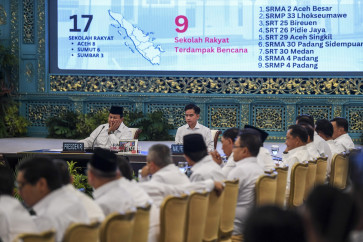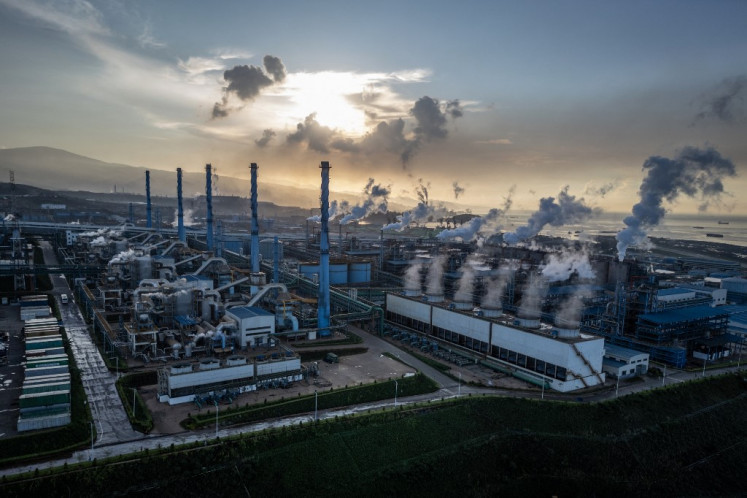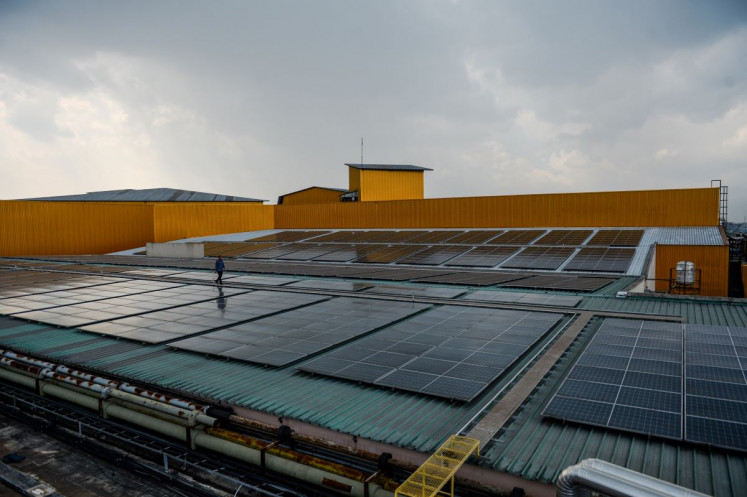Popular Reads
Top Results
Can't find what you're looking for?
View all search resultsPopular Reads
Top Results
Can't find what you're looking for?
View all search resultsIllicit imports keep damaging ozone layer
How much do you pay for your air conditioner refrigerant? If you're paying as little as Rp 80,000, you can be sure you're using chlorofluorocarbons, one of many substances known to damage the ozone layer
Change text size
Gift Premium Articles
to Anyone
H
ow much do you pay for your air conditioner refrigerant? If you're paying as little as Rp 80,000, you can be sure you're using chlorofluorocarbons, one of many substances known to damage the ozone layer.
On International Ozone Day, which falls on Sept. 16, the government admitted poor law enforcement meant the illegal import and trade of ozone-depleting substances (ODSs) remained widespread.
The problem is compounded by an influx of secondhand appliances such as refrigerators or air conditioning units that contain the ODSs, State Minister for the Environment Rachmat Witoelar said Tuesday.
"The number of cases involving the illegal import and trade of ODSs indicates our laws have not been fully enforced and have not created a deterrent," Rachmat said in his speech for world ozone day, whose theme this year is "Global Partnership for Global Benefits".
The Montreal Protocol on ozone protection, which Indonesia has ratified, requires parties to phase out the production and consumption of ODSs in order to protect the ozone layer.
The damage ODSs cause to the ozone layer was first observed in the 1970s. The ozone layer, which surrounds the earth at a height of about 25 kilometers, protects life on earth by absorbing some of the sun's radiation, thus preventing harmful ultraviolet (UV) rays from reaching the Earth's surface.
The increase in UV rays due to depletion of the ozone layer has been linked to increases in some types of skin cancers, cataracts, lower plant productivity and deterioration in certain forms of marine life.
As of 2008, the government has banned the import and trade of five ODSs: halon, carbon tetrachloride, methyl chloroform, chlorofluorocarbons (CFCs) and methyl bromide.
Halon is used in fire suppression and extinguishers. Carbon tetrachloride is found in solvents, including those used for metal cleaning and dry cleaning.
CFCs were widely used in air conditioners, refrigerators and cars, while methyl bromide is used for soil fumigation and for disinfecting products and buildings
The ministry said the country had cut ODS consumption by up to 9,000 metric tons as of 2008.
Rachmat said that to help combat illegal imports of the ODSs, the government would provide officers with refrigerant and halon identifiers to detect what kind of gas is inside tanks.
"We will provide them with identifiers to help them monitor (the use of) ozone-depleting substances," he said
He called on industry to review the consumption of hydrochlorofluorocarbons (HCFCs) and to seek an alternative gas, as the government will ban all HCFC imports from 2013.










